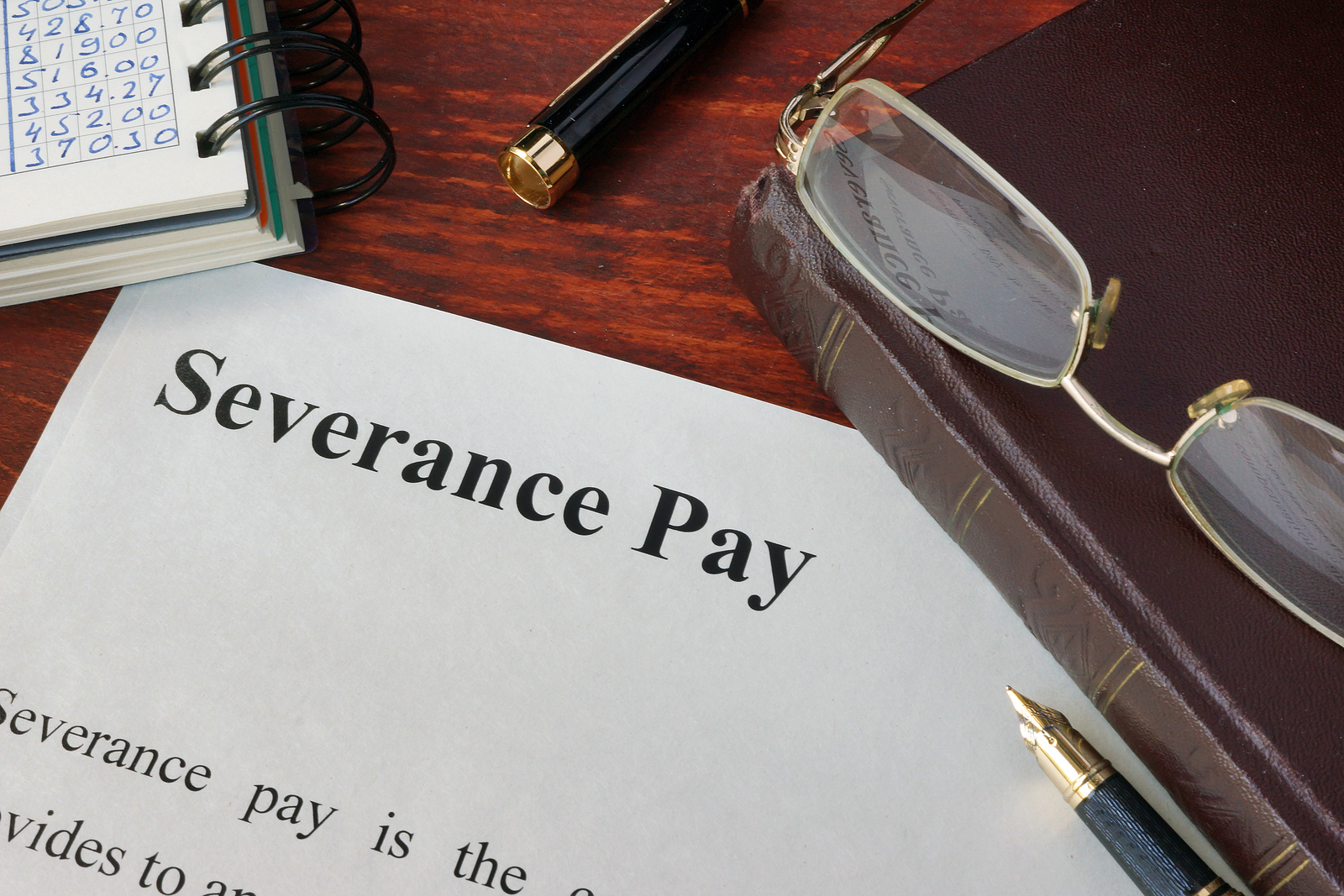
What is severance pay?
Severance pay is compensation paid to an employee whose employment has been severed by their employer. The Employment Standards Act, 2000 requires employers of a certain size to compensate long-term employees for economic losses they suffer upon termination. Though often conflated with termination pay, which is given in place of the required notice of termination of employment, severance pay is a separate form of compensation the employee may be entitled to. To learn more about the difference between termination and severance pay click here
When Does Severance Pay get Paid?
Severance is an often-misunderstood concept. An employee is “severed” when their employer:
- dismisses or stops employing the employee, including when the employer is bankrupt;
- constructively dismisses the employee and the employee resigns in a reasonable amount of time;
- lays the employee off for 35 or more non-consecutive weeks within a period of 52 consecutive weeks;
- lays off the employee because the business closes permanently; or
An employee who has been given a notice of termination can resign and keep the right to severance pay. To keep this right the employee must give two weeks’ written notice to the employer of their resignation and the resignation must also take effect during the statutory notice period – which falls at the end of the working notice period.
- Example: An employee who has worked 7 years and is entitled to 7 week’s notice of termination under the ESA. This seven weeks is called the statutory notice period. The employer gives 10 weeks’ working notice. The employee must give at least 2 weeks’ written notice of their resignation. As long as the employee’s resignation takes effect during the statutory notice period (i.e. the last 7 weeks of the 10 week working notice period), the employee will still be entitled to severance pay. If the employee gives notice of resignation during the first three weeks of working notice, the employee would give up their right to severance pay.
Who Qualifies for Severance Pay?
An employee qualifies for severance pay if their employment is severed and:
- the employee has worked for the employer for 5 years or more, regardless of the position and whether or not it was continuous; and
- this means that an employee who worked for several years, left for an indeterminate period, then come back to the company, is eligible for severance so long as the total of the periods is 5 years.
- the employer has a global payroll of at least $2.5 million OR severed the employment of 50 or more employees within a 6-month period because all or part of the business permanently closed.
- A global payroll accounts for all the employees paid by an employer, regardless of where they work or get paid.
How Many Days Does It Take to Get Severance Pay?
Severance must be paid either 7 days after employment is severed or on what would have been the employee’s next pay day – whichever is later. Employers also have the option of paying in installments. An installment plan requires the written consent of the employee or approval from the Director of Employment Standards at the Ministry of Labour. Installment plans can be no more 3 years and if the employer fails to make a payment, all the employee’s severance becomes due immediately.
How to Calculate Severance Pay
The Employment Standards Act sets out how to calculate severance pay: multiply the employee’s regular wages for a regular work week by the sum of the number of completed years of employment and the number of completed months of employment divided by 12 for a year that is not completed.
However, the formula set out in the ESA sets only the minimum requirements for severance, known as the statutory entitlement. An employee’s statutory entitlement is 1 week of severance pay per year of employment, with a maximum of 26 weeks.
Employees may also be entitled to common law severance pay. Common law severance is typically more money than the statutory minimum. However, accessing these entitlements generally requires a lawyer to assist with negotiating or litigating for the maximum amount. Employees are not entitled to common law severance if they have an employment contract that stipulates a different calculation of their severance package or limits their entitlements to their statutory minimums.
There are several factors involved in calculating common law entitlements including age, length of employment, position, and more. These factors can affect the amount of severance pay owed to an employee. For example, older employees are typically entitled to larger notice periods and associated payouts, as are those who held more senior or managerial positions. Even the availability of new employment, and the possibility of mitigation, is a factor that must be taken into consideration by employers.
The bottom line is that determining severance pay is not as simple as plugging numbers into a calculator. The basic ESA formula for calculating severance can give you a rough estimate of the minimum amount to which you are entitled, but you may be entitled to much more. Determining the full amount of severance pay to which you are entitled requires a careful assessment of your employment, any agreements or contract, and the consideration of several complex factors. To get the maximum amount rightfully owed to you it is important to get the right legal help and assess your situation fully.
Exemptions From Severance Pay
An employee may not be entitled to severance pay if they:
- refused an offer of “reasonable alternative employment” with the employer;
- have their employment severed and retire on a full pension recognizing all years of service that would have been worked in the normal course – excluding Canada Pension Plan benefits;
- have their employment severed because of the permanent closure of all or part of the employer’s business and the employer can demonstrate that the closure was caused by the economic results of a strike;
- are employed in construction, or are commonly associated with on-site employees;
- are employed in the on-site maintenance of buildings, structures, roads, sewers, pipelines, mains, tunnels, or other works;
- are guilty of wilfil misconduct, disobedience or wilful neglect of duty that is not trivial and was not condoned by the employer;
- have lost their employment because the employment contract became impossible to perform or has been frustrated by an unforeseen event or circumstance – not including bankruptcy or insolvency.
The above exceptions are not exhaustive and often complicated. It is recommended you seek legal help if you think you may be entitled to severance pay.
- Age
- Typically, older employs are entitled to a greater amount of severance pay to account for the fact that older employees may have more difficulties in seeking a comparable employment.
- Position
- Employees in senior positions may receive greater amounts of severance pay.
- Availability of similar employment
- It is one of the most important factors when determining the amount of severance pay. For instance, an employee in a declining industry, regardless of age or position, may receive greater amount of severance pay than someone in an industry of high demand because they will not be able to secure employment as quickly.
Other Bardal factors include length of employment, salary, experience, training and qualifications, and any other special circumstances that may affect the ability to secure a comparable job.

